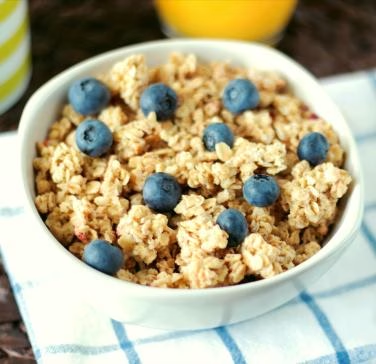Most carbohydrates we consume from food are starches. Within starch, there’s a type called resistant starch.
This resistant starch functions similarly to water-soluble, fermentable dietary fiber: it serves as a food source for beneficial gut bacteria and increases the production of short-chain fatty acids. It has numerous benefits, including weight loss, cardiovascular disease prevention, blood sugar stability, and gut health.
Although resistant starch is typically destroyed when exposed to high temperatures during cooking, it recovers after cooking by allowing foods rich in resistant starch to cool completely. Therefore, many people refrigerate these foods before eating them.
Actually, there aren’t many foods high in resistant starch. Today, we’ll introduce a few.
Oatmeal
One of the easiest ways to incorporate resistant starch into your diet is through oatmeal. Whether you cook your oats or simply add them to hot water, they provide a rich source of resistant starch.
In fact, every 100g of cooked oatmeal contains approximately 3.6g of resistant starch, along with various antioxidants. Simply leaving cooked oatmeal at room temperature for a few hours, or making overnight oatmeal and refrigerating it overnight, will provide you with a rich source of resistant starch.
Rice
Another great way to get resistant starch is to leave cooked rice at room temperature for a few hours, or refrigerate it. If you prefer to eat it cold, you don’t need to reheat it.
However, many people prefer to eat rice hot but worry that reheating it will significantly reduce the amount of resistant starch. This isn’t a concern. Rice that has been refrigerated overnight and then reheated still contains a good amount of resistant starch.
As for which type of rice is best, less refined rice, such as brown rice, is better than white rice because it provides more dietary fiber, manganese, magnesium, folate, and other nutrients.
Beans
Beans, such as edamame and peas, are rich in dietary fiber and resistant starch. It’s recommended to soak beans before cooking and thoroughly cook them to remove the lectins and antinutrients they contain.
While the resistant starch content varies among beans, 100g of cooked beans generally contains around 1-4g of resistant starch.
Potato starch
Potato starch, which looks a bit like flour, is considered a concentrated source of resistant starch. This is because 72% of potato starch is resistant starch.
To get resistant starch from potato starch, only 1-2 tablespoons per day is enough. However, potato starch doesn’t heat well, so it’s best added to cold dishes like smoothies, overnight oatmeal, and yogurt. Alternatively, you can use it to thicken cooked dishes after they’ve cooled.
Potatoes
Fully cook potatoes (not fried), then let them cool for several hours, soak them in ice water, or refrigerate them. Using the cold potatoes in salads or other cold dishes is a great source of resistant starch.
Potatoes are also a rich source of potassium and vitamin C. However, one important thing to note is that if they sprout, they should not be eaten.
Green Bananas
Unripe, green bananas contain a high amount of resistant starch and dietary fiber. When bananas ripen, not only does the skin turn yellow, but the resistant starch is also converted into simple sugars like fructose and glucose. Therefore, if you want to get more resistant starch, choose green bananas.


Leave a Reply